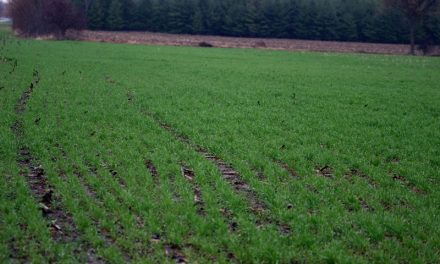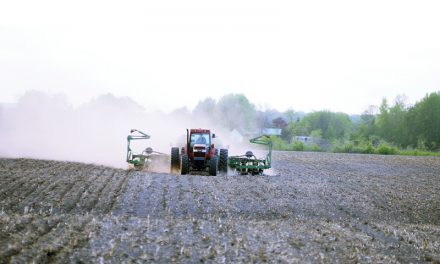by Kory Glover
AgriNews Staff Writer
EMBRUN – Extension dairy specialist, Mike Hutjens spoke at the Forage Focus conference in Stratford that was available remotely via Skype at the Old Co-op in Embrun to discuss forage outlook and quality, the role of forages in the livestock program and tools to evaluate forage quality.
Hutjens began speaking about the forage quality in 2018, talking about legume and mixed haylage from his own experience.
“We have about four or five testing labs in the United States and what they did was look at the 2018 crop and the five year average,” he said. “Get your numbers and see how you compare, can you beat me?”
Hutjens showed off how much money producers can make through different means of haylage (both legume and mixed) and how it can affect the Request For Quotation (RFQ). These include moisture, crude protein (CP), acid detergent fibre (ADF), neutral detergent fibre (aNDF), ash-free neutral detergent fibre (aNDFom), lignin, uNDfom240, NDFD30 from both legume and mix haylage.
Hutjens showed that, with his own research, that everyone was using 20 per cent protein but with a two per cent increase; thus, the RFQ can shift to the producer’s advantage.
“With the RFQ, you can see the difference at about 12 units and that makes it worth 12 plus dollars per pound,” he said.
The role of forages on the farm is very important, according to Hutjens, stating that they are the most cost effective source of nutrients in most cases and that 50 to 80 per cent of the rations will be forages.
“Some of your beef farmers will use every bit of that and your dairy guys with 80 per cent forage diets will be needed to move the heifers,” he said.
He also continued to say that forage is needed to maintain the rumen health and function of the animals while being a fibre source for microbes.
Some quality factors to keep an eye out for are leaf to stem or grain to stalk ratios, stage of maturity, soil fertility and growing conditions like sun, temperature and water.
To properly test your forages, recommended tests include dry matter (weekly on silages), CP (as needed or quarterly), ADF (as needed or quarterly), NDF (as needed or quarterly), calcium (as needed or quarterly), phosphorus (as needed or quarterly), other macro and trace minerals (once per year) and DCAD (as needed or quarterly).
Hutjens ended his presentation on the note that forage quality needs to be evaluated on the farm because it changes every year and every cutting. This impacts dry matter intakes and production and the impacts of profitability, growth, reproduction, and health. Types of forage need to be evaluated as well to see if you have the right forage to fit the farm’s needs and to make sure to have the correct tools to make it all possible.












